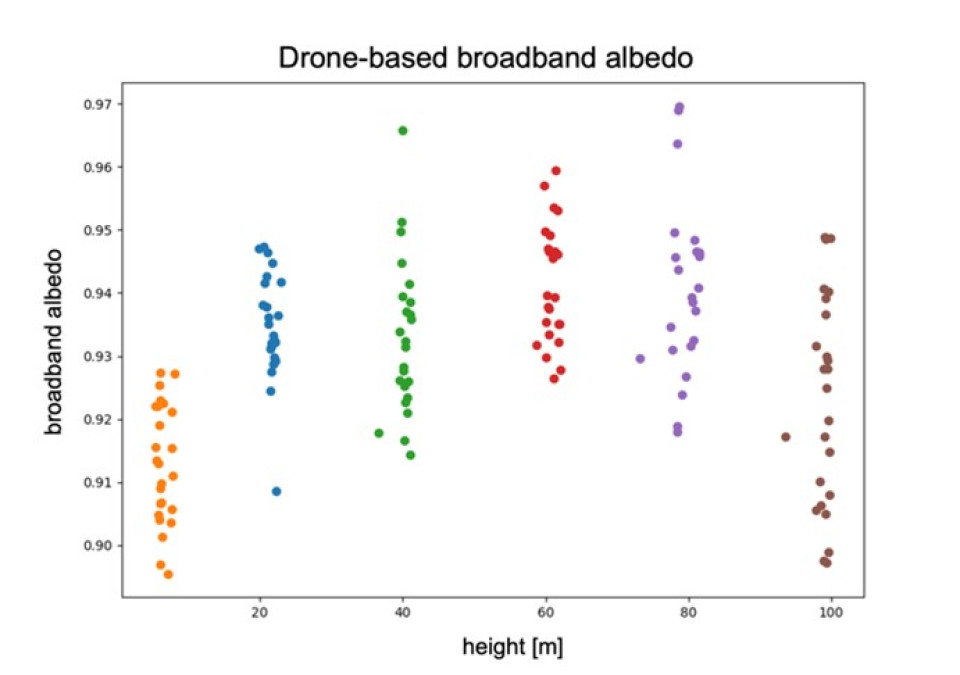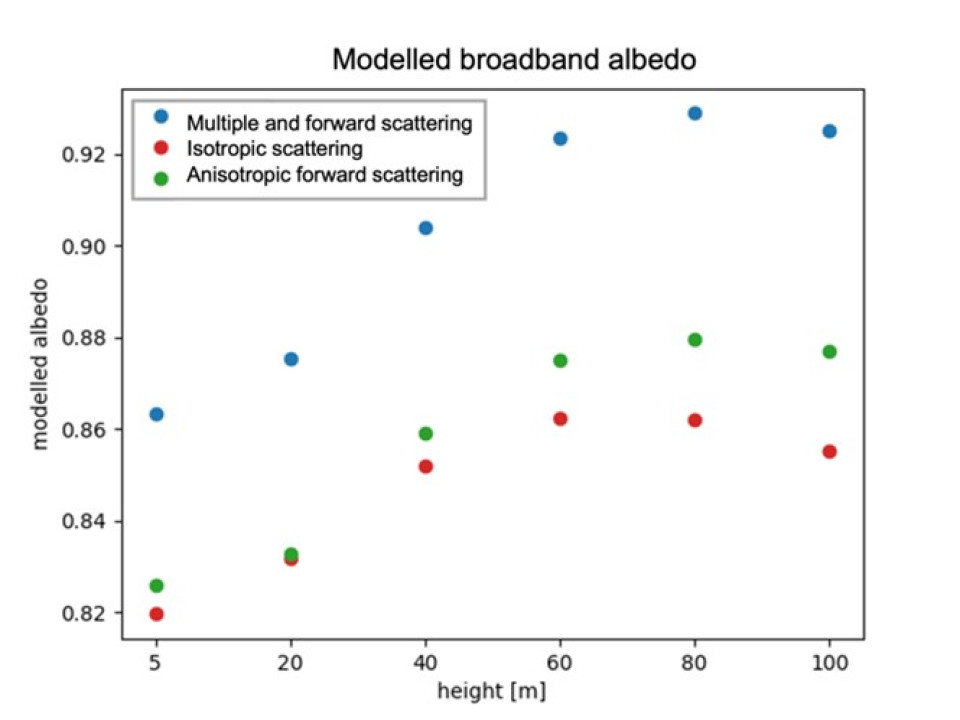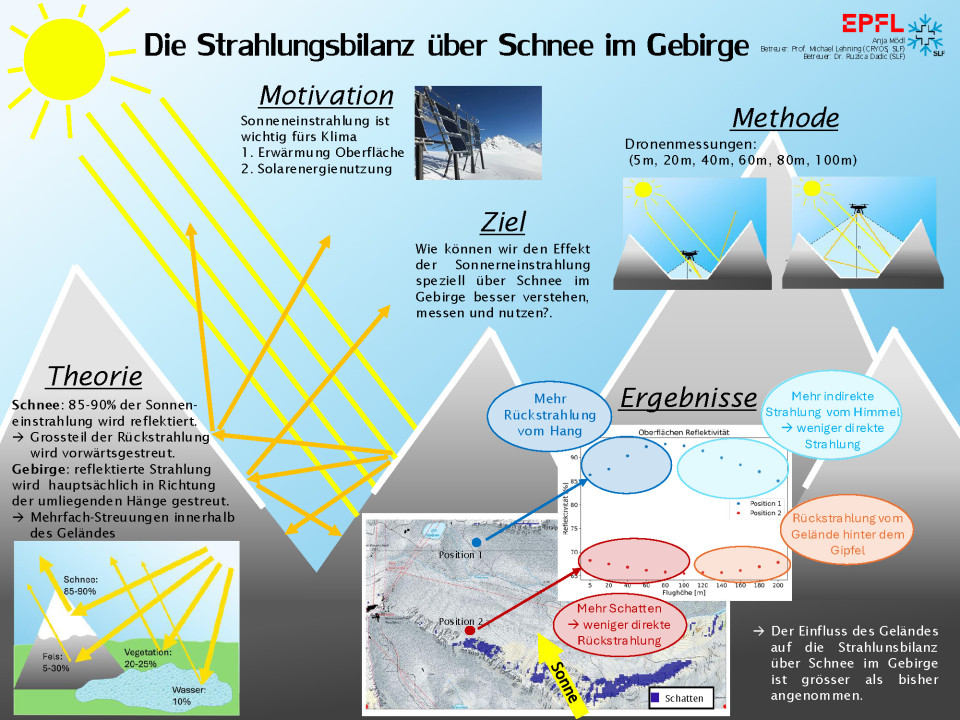Knowledge about surface radiation is important for climate change as well as energy harvesting via solar panels, because the surface radiation drives the energy balance on earth. Snow surfaces, scattering large parts of the incoming shortwave radiation back to space, are of special interest. For large scale observations remote sensing is the means of choice, here UAVs bring the advantage to capture also smaller scale heterogeneities. In this context, the radiation received at the sensor largely depends on the observation height above ground and therefore the field of view of the sensor. Especially in complex alpine terrain radiation reflected from the surrounding slopes significantly impacts the radiation balance through effects such as multiple scattering and the forward scattering properties of snow surfaces. We conducted both drone-based measurements and model simulations, with the surface radiation model GROUNDEYE, to determine the incoming and reflected radiation at the Totalp site in the Swiss Alpes close to Davos. With this we can show that the amount of reflected radiation received at the sensor largely increases with observation height, as more terrain is seen, but levels out where the impact of the slope reflection does not change significantly anymore. The incoming radiation is less impacted by this effect, but slightly decreases with observation hight. More precisely, we find that anisotropic forward scattering is most important for higher hights, but in general less important than multiple backscattering effects from the snow covered terrain. This distinct pattern is found both in measurements and modelled results. Further research towards the spectral dependence of the reflected radiation and its influence on the radiation distribution will be done.


Quiz question
Wer ist der meisten Sonneneinstrahlung ausgesetzt (und hat somit das höchste Risiko einen Sonnenbrand zu bekommen)?
Eine Skifahrerin auf der Sonnenseite des Berges.
Ein Skifahrer auf der Schattenseite des Berges.
Eine Gleitschirmfliegerin ca. 10m unterhalb des Gipfels auf der Sonnenseite des Berges.
